The findings from the research of the Armenian media market were presented on February 5 with the participation of media and civil society representatives. The research has been conducted within the framework of USAID-funded Media Program in Armenia and implemented by Internews, Media Initiatives Center, Yerevan Press Club, Zinc Network and Jnomics Media Consultancy.
Mediamax highlighted the interesting findings of the research.

Photo: Mediamax
Increase public trust in the media
Corina Cepoi, Director of Media Program in Armenia
I am pleased to note that this research offers conclusions and recommendations tailored to the Armenian media environment.
 Corina Cepoi
Corina CepoiPhoto: Mediamax
Hopefully, it will be useful both for individual media and for the industry as a whole.
Will Dunbar, Zinc Network, Project Director
One of the primary objectives of this program implemented in Armenia is to increase public trust in the media.
 Will Dunbar
Will DunbarPhoto: Mediamax
I hope that this research will be up-to-date and serve as a valuable resource for the media to achieve these and other objectives. We will definitely continue to work in this direction in the years to come.
The general picture of the media industry and the “intense struggle” among media outlets
Victoria Andreasyan, Zinc Network, Project Manager
Methodology - We conducted the research utilizing open-source investigations, interviews with media representatives, members of public, donor organizations, industry experts, marketing and advertising professionals, as well as a variety of digital market analysis tools.
During the study, the regional media, the involvement of the Diaspora in the media sector were also considered. The main challenges facing the media industry have also been clarified.
 Victoria Andreasyan
Victoria AndreasyanPhoto: Mediamax
As a result of the research, we have reinforced the belief that Armenia’s media landscape is characterized by diversity, yet at the same time by strong polarization. Media often struggle to maintain editorial independence while simultaneously preserving financial stability. We are convinced that if the media have a better understanding of their audience and can identify methods to reach that audience, they will be able to increase their influence.
We are also convinced that in order to stay true to own strategy and maintain editorial independence, diversification of income sources and the exploration of new financing models are of paramount importance.

Photo: Mediamax
Just as crucial is fostering trust with the audience, as it will not only have positive impact on the individual media outlets but also on the overall vitality of the media sector.
Digital media/TV
Victoria Andreasyan
It’s no secret that digital media has significantly surged in recent years. However, it is premature to speak of a decline in the role of television channels.
In 2023, a study conducted by Internews and the research company Prisma reveals that for 56 percent of the audience, television remains the primary source of news. The index for digital platforms is slightly higher - 58 percent.
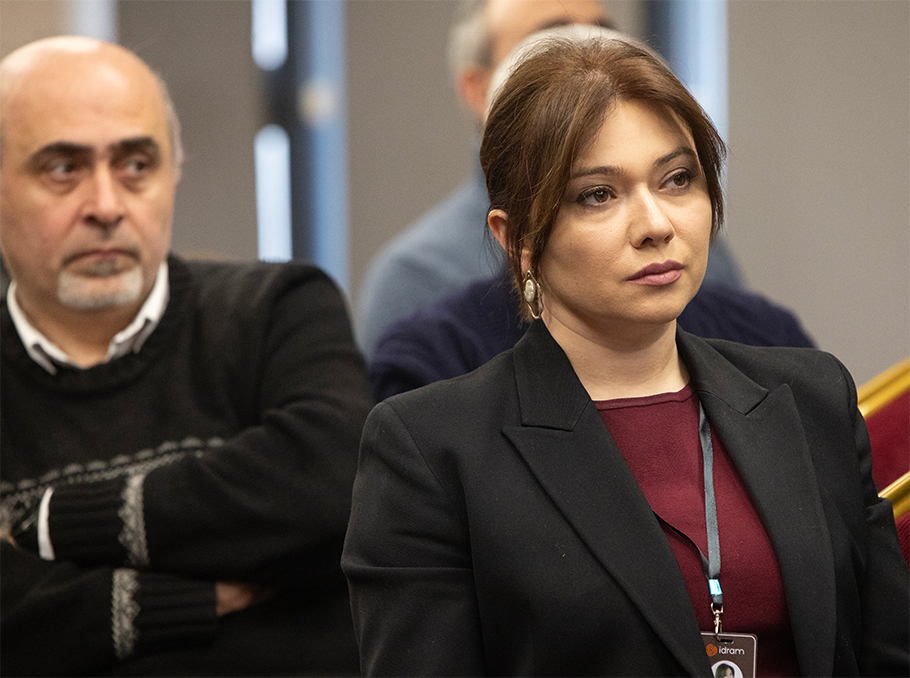
Photo: Mediamax
During discussions with us, experts expressed the opinion that the transition to digital platforms is influenced by several factors. One of them is technological advancement, while another is the availability and accessibility of the Internet in Armenia.
In the media sector, the impact of social networks is on the rise. According to the 2023 study conducted by Internews, the majority of respondents stated that they read news several times a day via social networks.
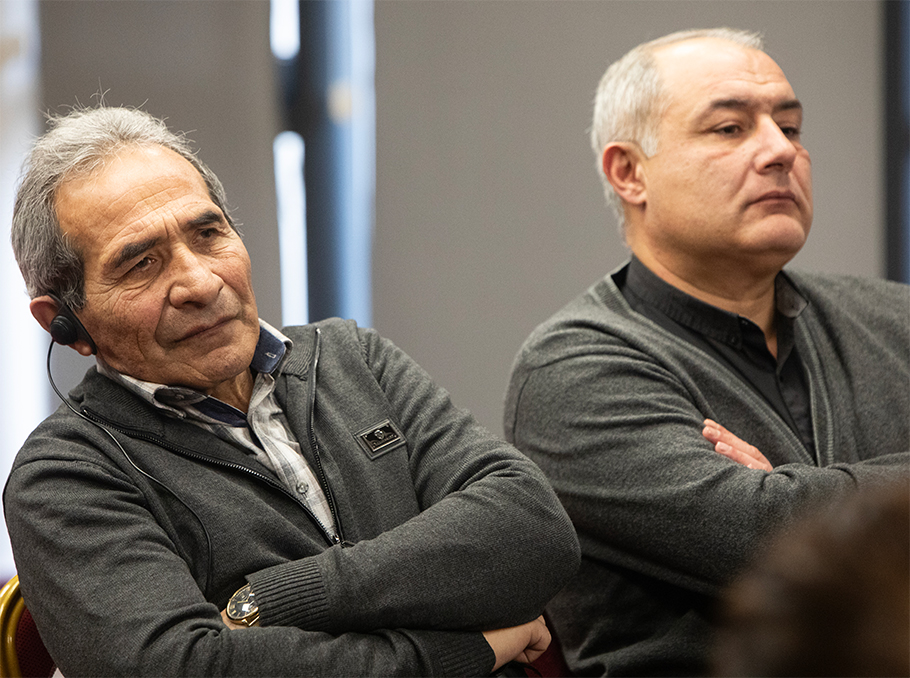
Photo: Mediamax
Facebook is the main platform for news sharing, followed by Instagram and YouTube. Media outlets often use social networks to broaden and rejuvenate their audience. The impact of social networks in the media sector is growing. For instance, traditional media outlets are opening TikTok accounts or creating short video clips.
Advertising, media and challenges
Victoria Andreasyan
The television advertising market is quite competitive, but it faced a significant decline in 2020 due to the impact of coronavirus pandemic and the war. While there is a positive trend, the market has not yet fully recovered to the 2019 levels.
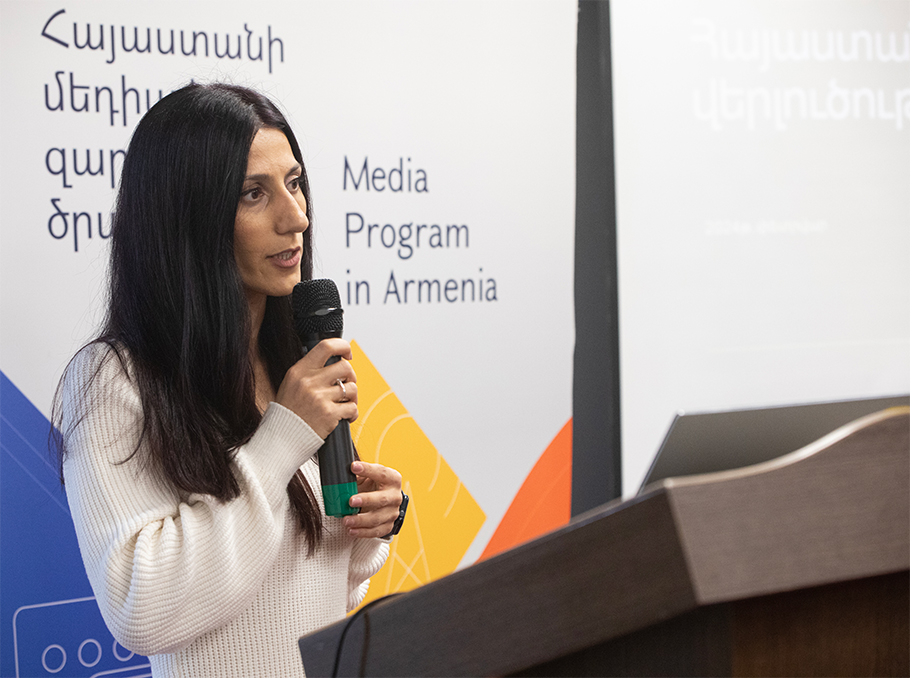 Victoria Andreasyan
Victoria AndreasyanPhoto: Mediamax
Advertising in digital media has generally increased, but it experienced a 6 percent decline in 2022, largely attributed to the prohibition on advertising by bookmaker companies.
Digital media also faces a number of challenges, with the main one being the financial stability. This type of media largely depends on donor funding and often operates on a short-term or thematic basis. Media outlets are striving to diversify their income, including through audience donations and subscriptions. Another significant challenge is monetizing Armenian-language content.
The consumption of print media is declining globally, including in Armenia, where it currently represents only 3 percent of media consumption. Our interviewees emphasized that this decline is not attributed to the quality of the content of print media but rather to the convenience of digital platforms. As consumption decreases, advertising revenue naturally follows suit.
Media in the regions and the influence of the Diaspora
Victoria Andreasyan
Television and radio remain the primary sources of information in the regions. In Armenia, there are a total of 8 television channels and 9 regional broadcasters.
To reach a wider audience, some regional television channels are increasingly using online platforms, streaming content through websites or YouTube channels. Others are partnering with cable television channels.
Four radio stations broadcast across the country.

Photo: Mediamax
The issues of regional media largely coincide with the overall market landscape. However, there are additional challenges here. Firstly, it’s financial stability. The primary source of income for regional media is donor funding, which is often short-term. Additionally, advertising revenue has declined, particularly with the ban on ads by bookmaker companies, which came into effect in 2022 and affected the regional media the most.
Regarding the Diaspora’s influence on the media sector, it is important to understand that it is not homogenous. People speaking different languages and living in different countries contribute to this influence.
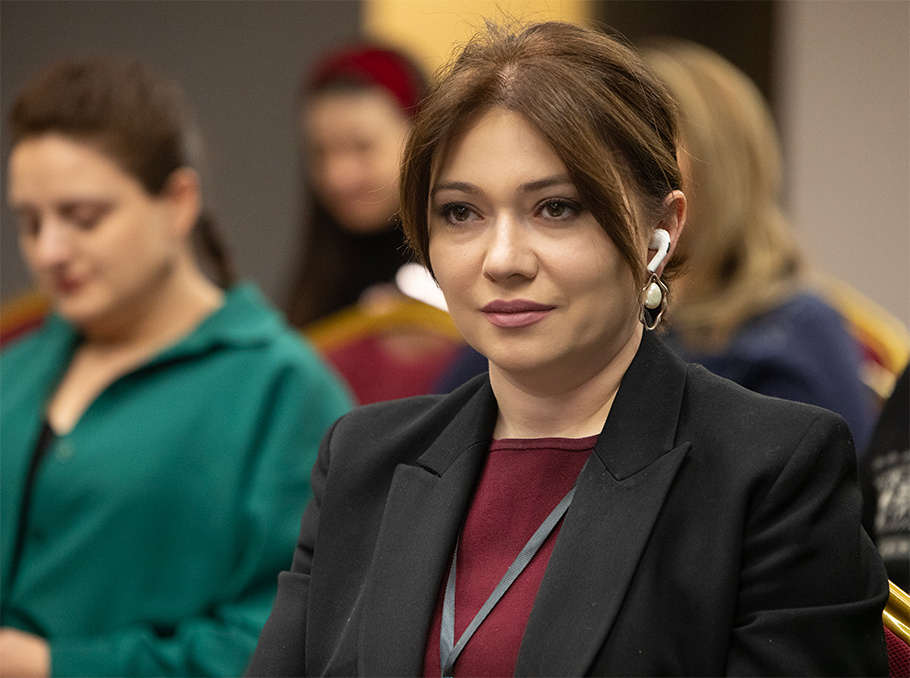 Tatevik Vardevanyan (ID Բանկ)
Tatevik Vardevanyan (ID Բանկ)Photo: Mediamax
However, during the research, we discovered a notable gap in English-language content within Armenian media, limiting accessibility for compatriots living in English-speaking countries. As for financial support from the Diaspora, it is mostly one-time and focused on topics of interest of the Diaspora.
“We see grounds for optimism”
Victoria Andreasyan
In any case, we see some grounds for optimism regarding the diversity of the Armenian media field. Various media outlets provide diverse content, genres tailored to different audiences. Press freedom indicators are improving. In 2023, Armenia was ranked 49th in the “Reporters Without Borders” organization’s rating, showing an improvement of 25 positions from 2013 to 2023.
Another reason for optimism is that despite all the challenges there are still viable, independent, and investigative media outlets operating in Armenia.
Yana Shakhramanyan
Photos by Emin Aristakesyan
















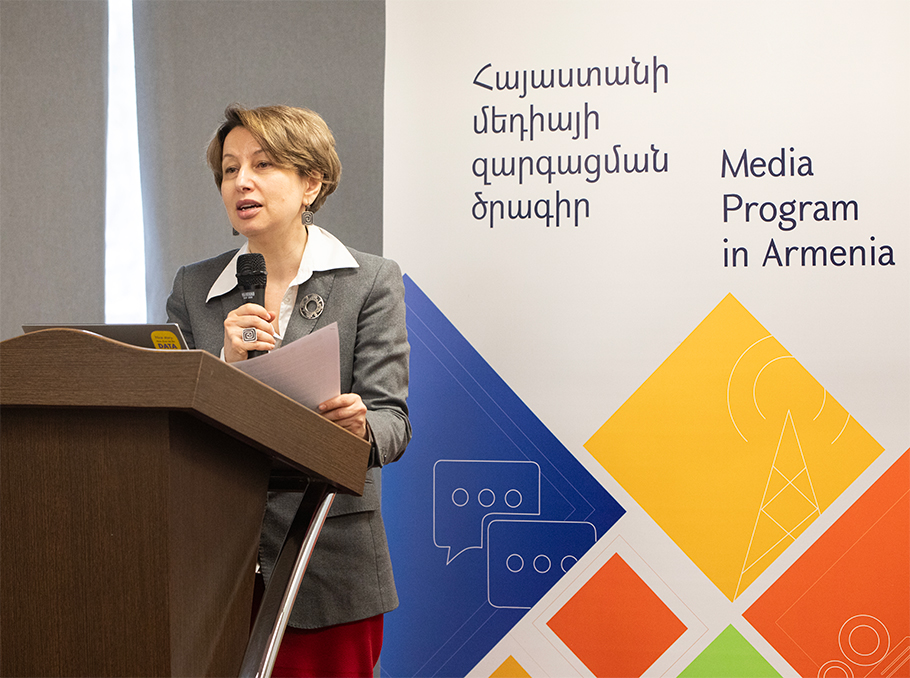

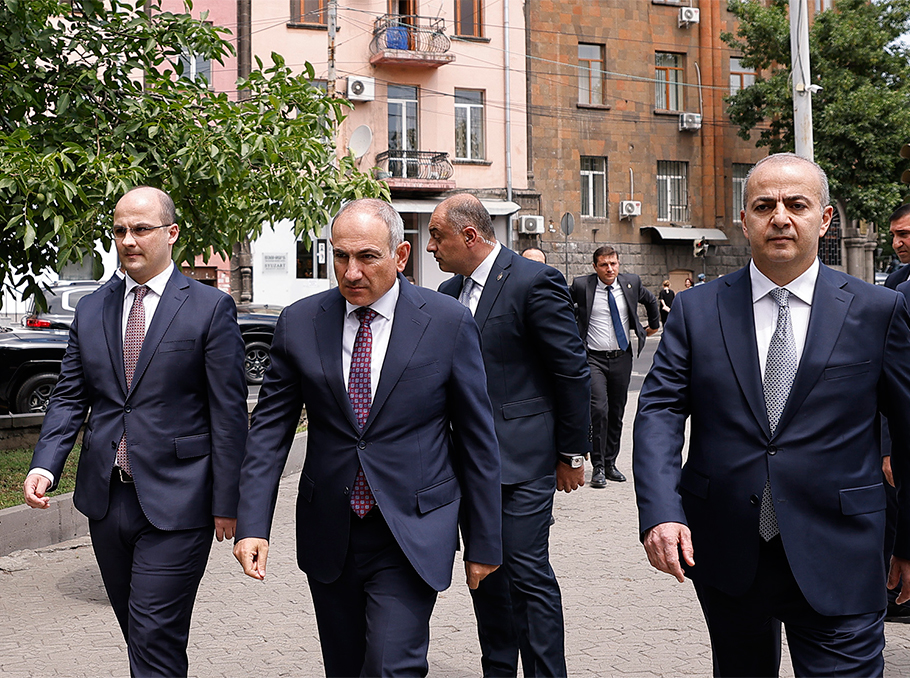
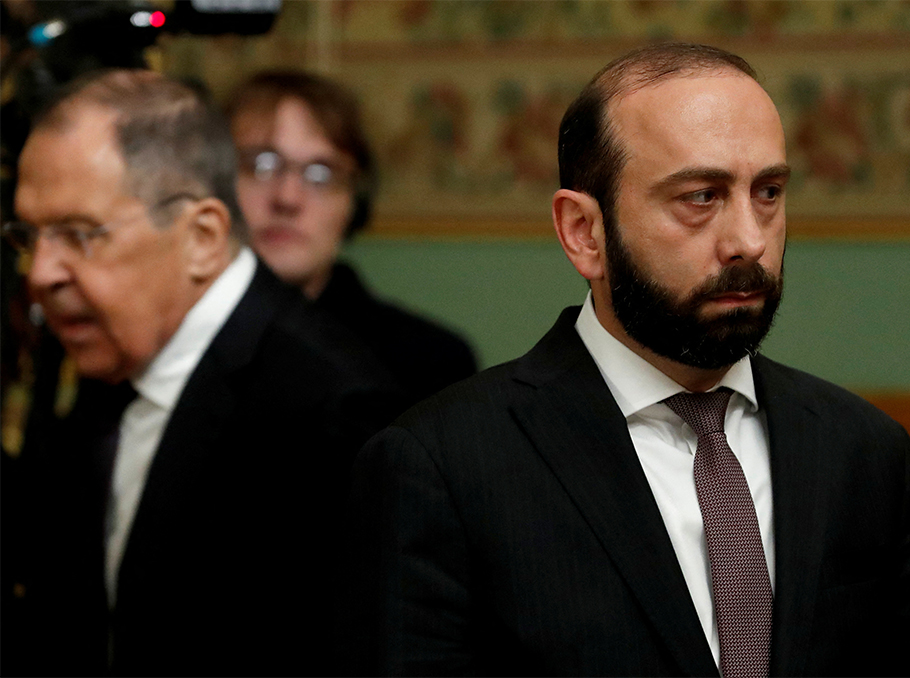
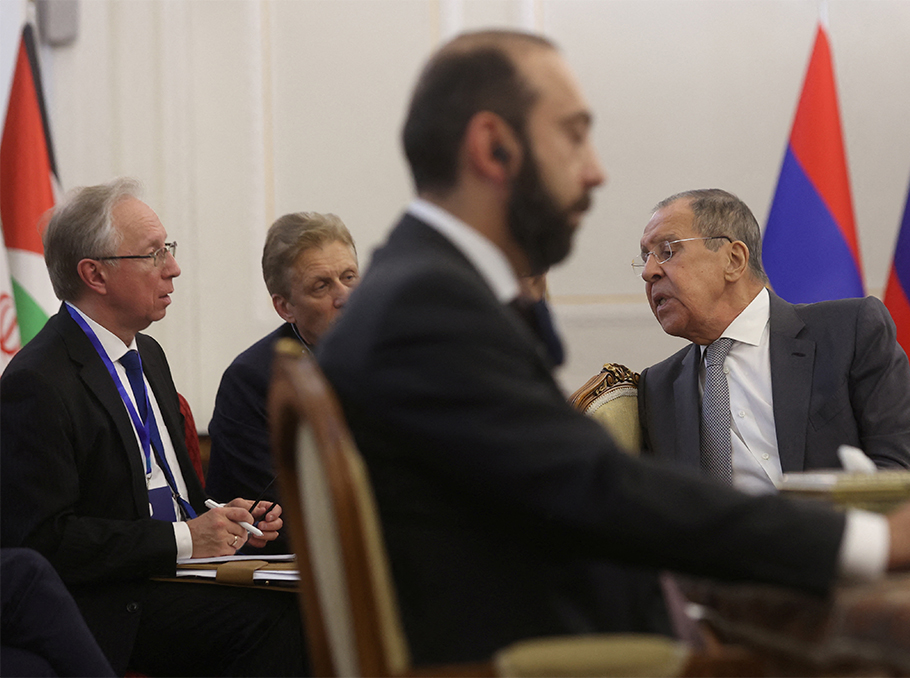







Comments
Dear visitors, You can place your opinion on the material using your Facebook account. Please, be polite and follow our simple rules: you are not allowed to make off - topic comments, place advertisements, use abusive and filthy language. The editorial staff reserves the right to moderate and delete comments in case of breach of the rules.